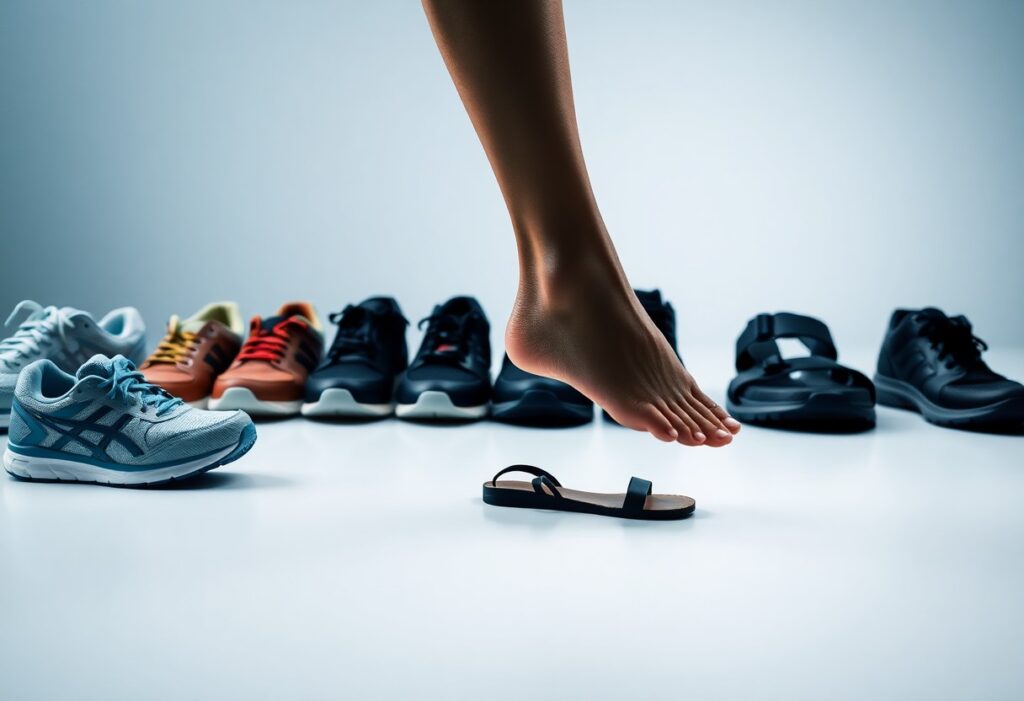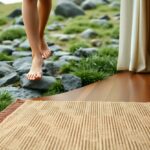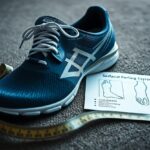
Your choice of footwear plays a crucial role in shaping your foot health while you walk. Many people mistakenly think that opting for shoes with more cushioning and support will eliminate foot discomfort. However, traditional shoes frequently do more harm than good, according to experts. Dr. Alissa Kuizinas, a reputable podiatrist based in Massachusetts, strongly recommends barefoot shoes or minimalistic shoes as they promote stronger and healthier feet. By selecting footwear that allows your feet to function naturally, you can significantly reduce the risk of developing foot problems and improve your overall foot wellness.
Recognizing the Risks Associated with Conventional Footwear
Conventional shoes might provide temporary relief from foot pain, but they often worsen existing conditions and can introduce new issues, as pointed out by Dr. Alissa Kuizinas. She highlights that the $133 billion shoe industry often places aesthetics and profits above genuine foot health, leading to designs that can restrict and weaken your feet over time. This dependency on traditional footwear can result in a cycle that ultimately harms your foot health and well-being.
Understanding How the Shoe Industry Fails to Address Foot Health
The shoe industry’s flawed approach to foot health is primarily rooted in its focus on adding excessive cushioning, support, and rigid construction to shoes while neglecting the true causes of discomfort. This approach can create a dependency on shoes that may ultimately undermine your foot health as it leads to complications that could have been prevented through more thoughtful design.
Examining the Design Flaws of Traditional Footwear
Traditional shoe designs often come with narrow toe boxes, rigid soles, and excessive cushioning—all of which can restrict natural foot movement, resulting in weakened and dysfunctional feet. Dr. Kuizinas emphasizes that footwear should protect your feet from external elements, rather than hinder their natural movement. Ideally, shoes should prioritize natural foot function and exhibit minimalist features like wide toe boxes, flexible and flat soles, and minimal cushioning to truly foster foot health.
By adopting barefoot shoes or minimalistic footwear, you are taking an active step toward strengthening your feet and improving your overall foot well-being. Dr. Kuizinas endorses a philosophy of using as little shoe as possible, allowing your feet to function naturally and move freely, which is essential for upholding healthy foot mechanics.
Exploring the Importance of Natural Foot Movement for Health
Footwear that limits your foot’s ability to move freely can result in various foot issues and discomfort. It is vital to analyze how your shoe choices directly impact your overall foot health and levels of comfort.
Evaluating the Effects of Footwear on Natural Mobility
To fully understand how shoes influence your foot’s ability to move, it’s important to carefully analyze the specific design and features of your footwear. Traditional shoes often incorporate cushioning and support features that can inadvertently hinder your foot’s natural movement, leading to weak and dysfunctional feet over time. This limitation can impede your feet from developing the necessary strength and flexibility they require for optimal function.
Realizing the Benefits of Allowing Natural Foot Mobility
The benefits of permitting your feet to move naturally are extensive, as strong feet serve as the foundation for overall foot health. By choosing minimalistic shoes or barefoot footwear, you empower your feet to perform naturally, promoting strength and resilience that are crucial for various activities.
Natural movement is essential for developing strong feet. When constrained by conventional footwear, you are at risk of experiencing various foot problems and discomfort. In contrast, embracing minimalistic shoes or barefoot options can significantly elevate your foot health by allowing for natural movement and facilitating strength-building. Making informed footwear choices can reduce your risk of developing foot issues while enhancing your overall foot wellness.
Understanding the Principles of Functional Footwear
Gaining a comprehensive understanding of functional footwear is essential, as these shoes prioritize both foot health and natural movement. Functional shoes are specifically crafted to enable your feet to operate as intended, eliminating the need for excessive support or confinement.
Defining Functional Footwear and Its Key Attributes
Upon researching and experimenting with various shoe types, you’ll find that functional footwear showcases unique characteristics, including a wide toe box, flat and flexible soles, along with minimal cushioning and support. These features empower your feet to move freely and naturally, fostering stronger and more capable foot mechanics that promote long-term health.
How Functional Footwear Enhances Overall Foot Health
Wearing functional shoes presents numerous advantages, such as improved foot strength, a reduced risk of injury, and enhanced overall foot health. These shoes facilitate your feet to function as they were designed, paving the way for stronger feet and better balance in your daily activities.
Conceptually, functional footwear is engineered to support your feet without imposing unnecessary constraints, allowing them to move and flex naturally. This design philosophy encourages optimal foot health while minimizing the risk of developing foot ailments. By selecting functional shoes like barefoot shoes or minimalistic options, you actively promote healthy foot function and lower the chances of foot pain and injury. Transitioning to functional footwear may require time and gradual adjustment, but the long-term benefits for your foot health are immeasurable.
Recognizing the Essential Features of Functional Footwear
To attain optimal foot health, it’s vital to look for shoes that possess specific features. The key elements to consider include:
- Wide toe box
- Flat and flexible soles
- Minimal cushioning and support
Being aware of these characteristics will greatly assist you in selecting shoes that promote healthy foot function and support.
Understanding the Significance of Wide Toe Boxes and Flexible Soles
A fundamental characteristic of functional shoes is a wide toe box, which allows your toes to spread naturally. This design feature helps prevent toe jamming and other discomfort-related issues that could lead to chronic foot pain and hinder your mobility.
Recognizing the Importance of Minimal Cushioning and Support
In addition to a wide toe box, functional shoes should also offer minimal cushioning and support. This design choice enables your feet to move naturally while strengthening foot muscles, thereby reducing the likelihood of foot issues in the long run.
It’s important to emphasize that minimalistic footwear, including barefoot shoes, can greatly enhance your foot health by allowing your feet to function freely. By opting for shoes with minimal cushioning and support, you can improve muscle strength in your feet and decrease the chances of injuries. This strategic approach not only enhances your overall foot health but also reduces the likelihood of experiencing chronic pain. Therefore, it is essential to prioritize shoes that facilitate natural foot movement without excessive cushioning or support.
Transitioning to Functional Footwear: A Step-by-Step Guide
Having recognized the significance of functional footwear, it’s time to embark on your transition. Contrary to the common misconception that more cushioning and support leads to better comfort, you should opt for minimalistic shoes or barefoot shoes that promote your feet’s natural functioning.
Practical Steps for Successfully Transitioning to Functional Footwear
Despite any uncertainties, gradually introduce functional shoes into your daily routine by following these practical tips:
- Begin with short walks and gradually increase the distance
- Choose shoes that feature a wide toe box and flat soles
- Select minimal cushioning and support
The key is to allow your feet ample time to adjust to the new shoes while simultaneously strengthening the muscles in your feet.
Stressing the Importance of Patience During the Transition
Transitioning to functional footwear requires patience and a gradual approach. Shoes that are overly minimalist can lead to discomfort and pain if your feet are not yet accustomed to them. Starting slowly is essential, giving your feet the time they need to acclimate to the new footwear.
Footwear options like barefoot shoes or minimalistic shoes can provide immense benefits for your foot health, but it is crucial to introduce them gradually. Overuse or incorrect sizing can result in injuries or ongoing discomfort. The ultimate aim is to strengthen your foot muscles while improving your overall foot health; hence, patience is vital, and rushing through this process should be avoided. The long-term rewards will be substantial; you can expect to experience improved balance, reduced pain, and stronger feet.
Cultivating Strong and Functional Feet for Lifelong Health
Even in a world dominated by shoes laden with excessive cushioning and support, you can cultivate strong and functional feet by making informed footwear choices.
The Connection Between Foot Strength and Overall Well-Being
Alongside other health factors, foot strength is pivotal for your overall well-being, affecting your balance, posture, and movement abilities.
How Functional Footwear Aids in Developing Strong Feet
Functionally designed shoes that incorporate a wide toe box, flat and flexible soles, and minimal cushioning are crucial for building strong feet, as they facilitate natural movement and flexibility.
Indeed, wearing functional shoes or barefoot shoes can significantly contribute to developing stronger foot muscles and improving your overall foot health. By enabling your feet to move and function naturally, you can reduce the risk of foot problems and optimize your balance and stability. As you transition to minimalistic shoes, you can anticipate improvements in your walking technique and overall sense of well-being.
By taking proactive steps toward your foot health, you can select footwear that enhances your feet’s natural functions instead of hindering them. Choosing barefoot shoes or minimalistic options that allow your feet to operate naturally will promote strength development over time. This choice will lead to increased stability and comfort during your activities, giving your feet the opportunity to grow strong and capable. Start your journey by seeking shoes with a wide toe box, flat and flexible soles, and minimal cushioning and support, and remember to exercise patience as you transition to a more natural walking style.
The Article A Podiatrist’s Guide to How Shoes Affect Your Foot Health appeared first on My Shoes Finder
The Article How Shoes Impact Your Foot Health: A Podiatrist’s Insights Was Found On https://limitsofstrategy.com







No responses yet